#marika rivera
Text
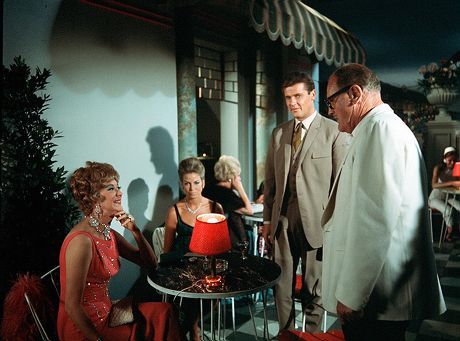


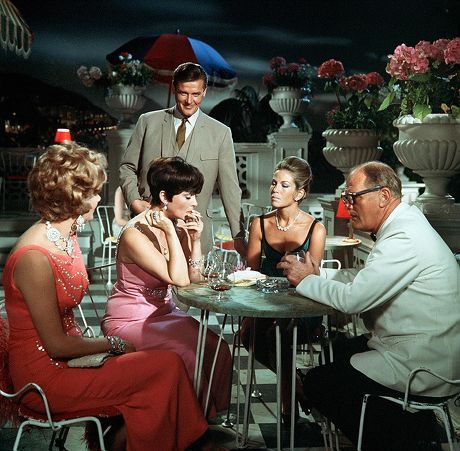
The Saint: The Better Mousetrap (5.9, ITC, 1966)
"Our lamented fallen friend was trying to frame me. It's a habit with some people, trying to bait a trap with an unusual kind of cheese."
"What kind?"
"Me."
#the saint#the better mousetrap#1966#itc#leslie charteris#leigh vance#gordon flemyng#roger moore#alexandra stewart#madge ryan#ronnie barker#arnold diamond#lisa daniely#patrick whyte#eddie byrne#michael coles#aimée delamain#marika rivera#pauline collins#alan downer#robert bridges#vicky hughes#jewel robberies in the South of France? that can only mean the return of Arnold Diamond's Col. Latignant! and I'm rather pleased to see him#as i wasn't at all certain the character would return in the colour seasons (still no sign of Inspector Teal yet!). Latignant is as#distrustful as ever and also has a comic relief helper along.. that much has happened before‚ but this time the helper is played by Ronnie#Barker who even gets his name on the guest star bill (alongside Madge Ryan and Alexandra Stewart). it's a fairly small support role so it#might be unusual to see him get such billing (especially as Diamond does not)‚ but it presumably reflects the success Barker had found with#The Frost Report (which had started earlier in '66 and which would eventually lead him to little Ronnie Corbett and tv immortality)#Stewart was a well known European film star and happily appears to still be working‚ while Ryan was a celebrated stage actress#eddie b on the other hand was a repeat offender‚ here making the third of four Saint appearances (and all of them rotters so far!)
5 notes
·
View notes
Photo
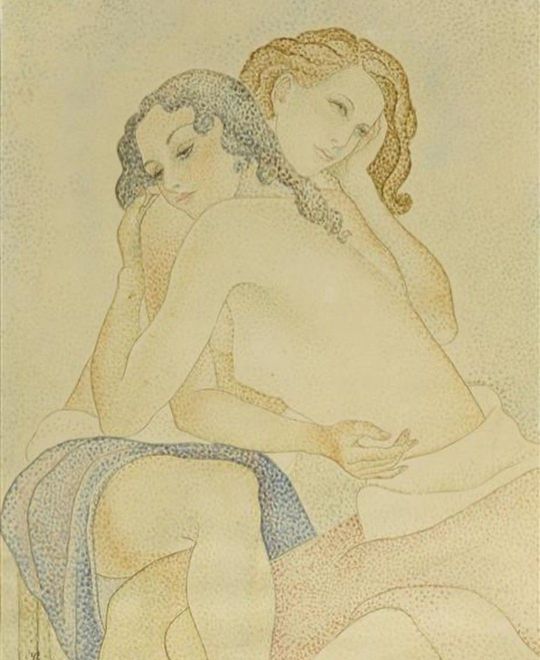

Marie Vorobieff (1892-1984):
I. Portrait of the Artist's Daughter, Marika (Rivera), aged 23, with a Lover (1942)
II. Two Young Women (1943)
#art#art history#marie vorobieff#marevna#russian#lesbian#lesbian art#wlw#women#women artists#female artists#women painters#female painters#watercolour#watercolour on paper#oil#oil on panel#fine art#drawing#painting#pointillism#expressionism#XXth century#20th century#female homosexuality#intimacy tag
742 notes
·
View notes
Text
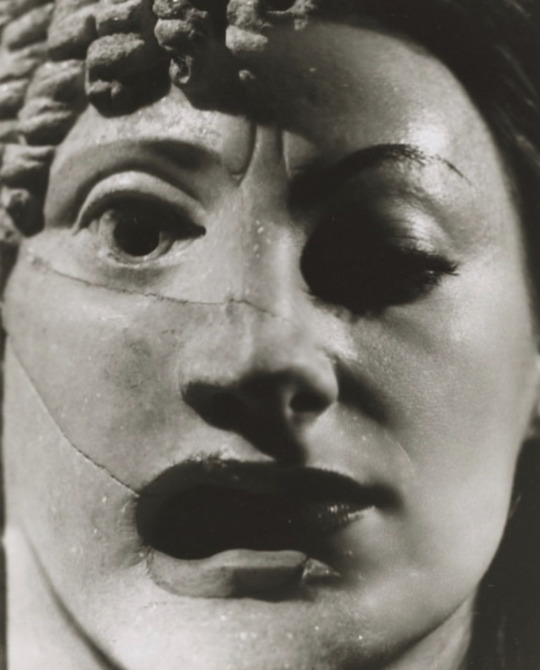
Marika Rivera and a Greek Mask (1947)
- Angus McBean
39 notes
·
View notes
Text
Angus McBean, Marika Rivera and a Greek Mask (1947)
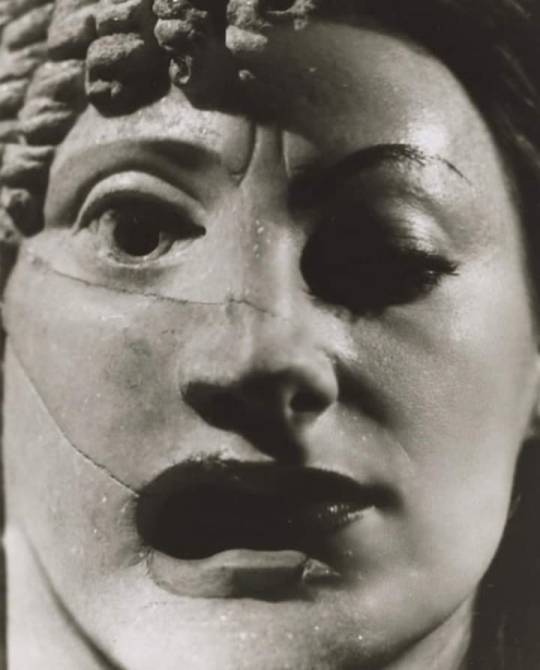
28 notes
·
View notes
Text
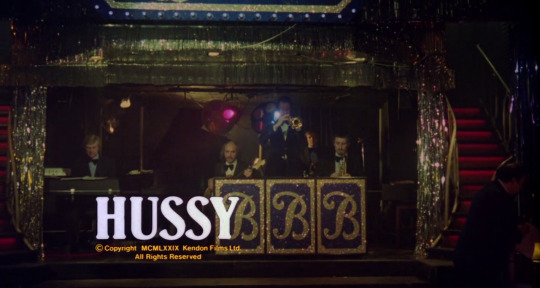
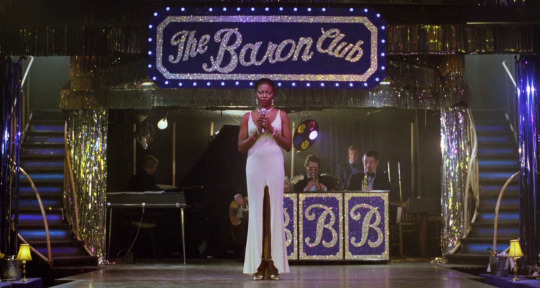
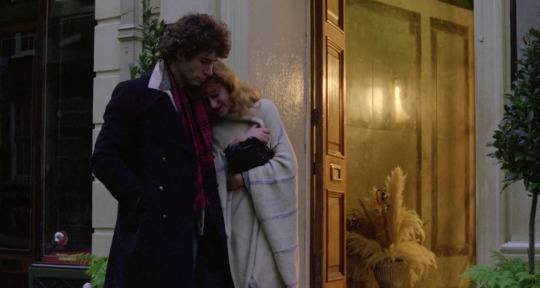
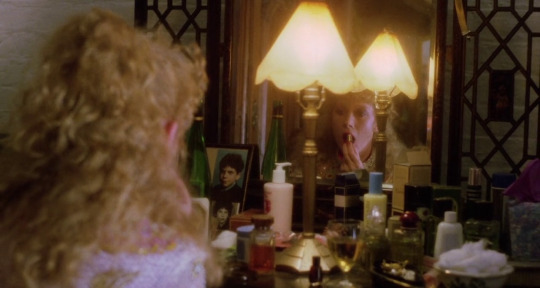
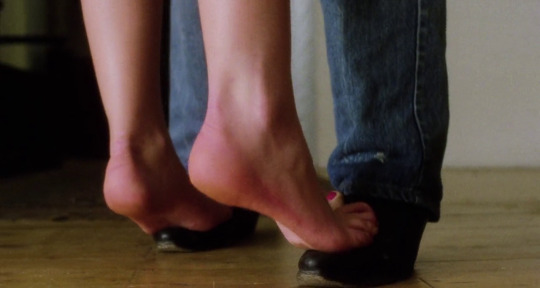
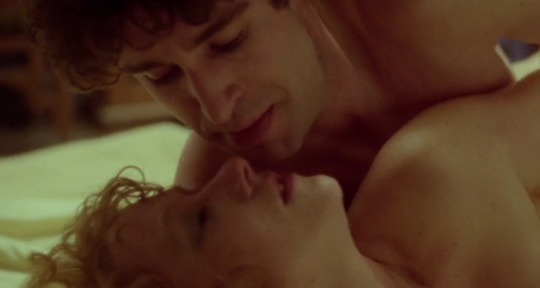
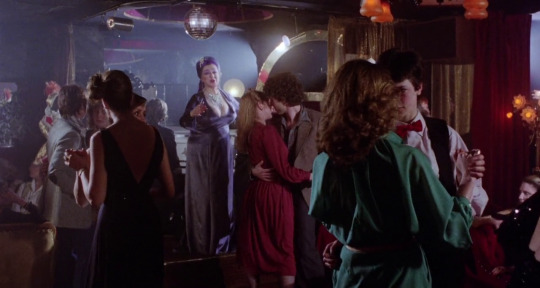



Hussy (1980)
Director - Matthew Chapman, Cinematography - Keith Goddard
#scenesandscreens#hussy#Matthew Chapman#helen mirren#john shea#Paul Angelis#Murray Salem#jenny runacre#Daniel Chasin#Imogen Claire#Patti Boulaye#Marika Rivera#Keith Goddard
21 notes
·
View notes
Photo

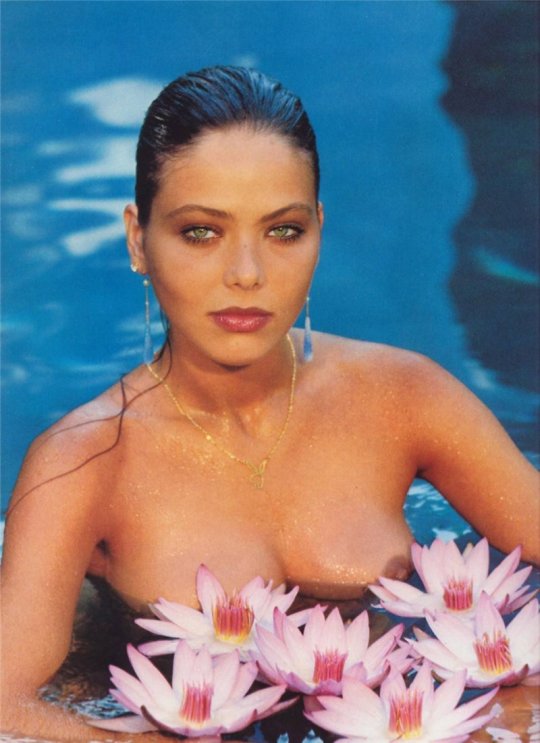


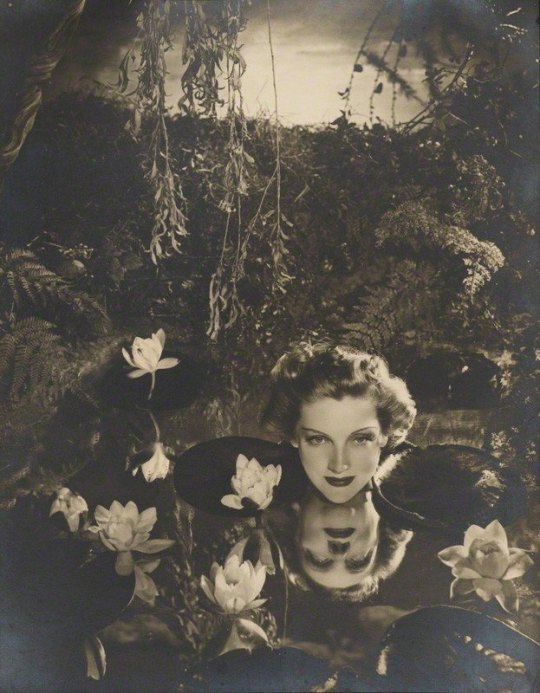
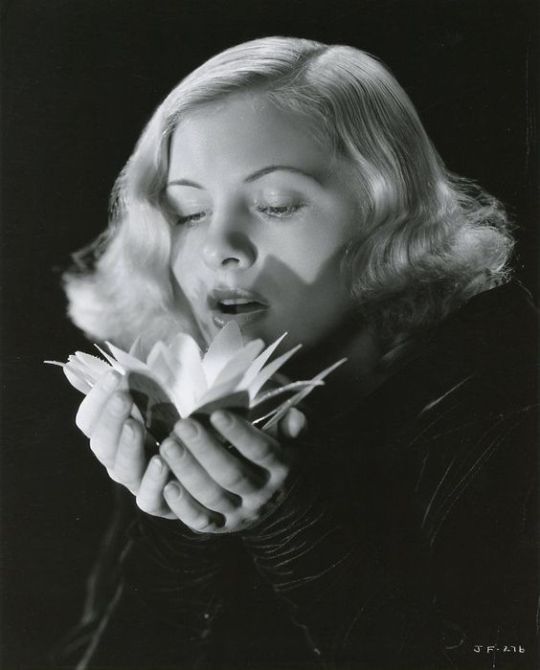
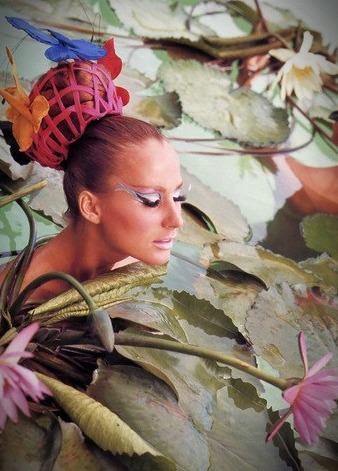
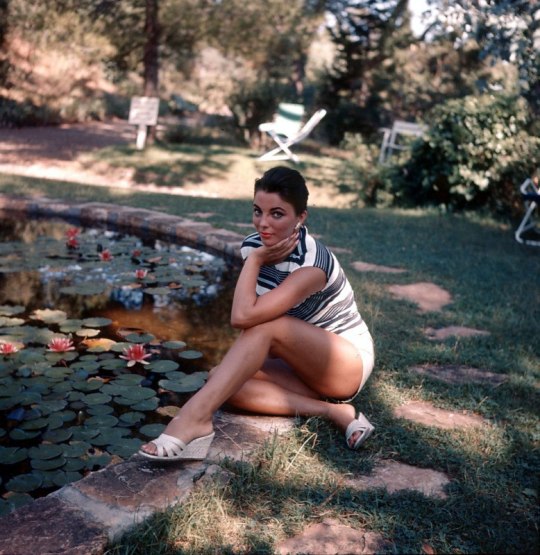
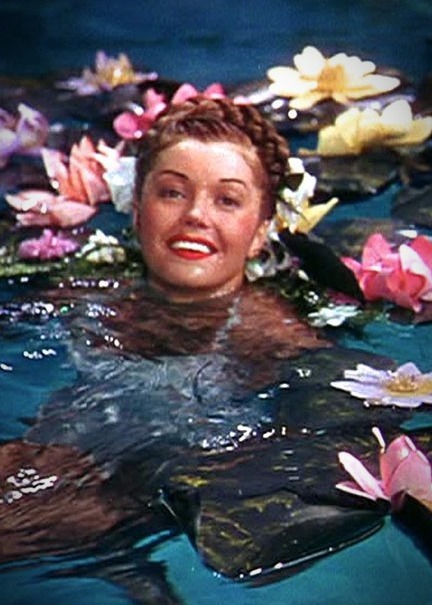
#claudia cardinale#ornella muti#elke sommer#marika rivera#dorothy dickson#joan fontaine#joan collins#esther williams
27 notes
·
View notes
Photo
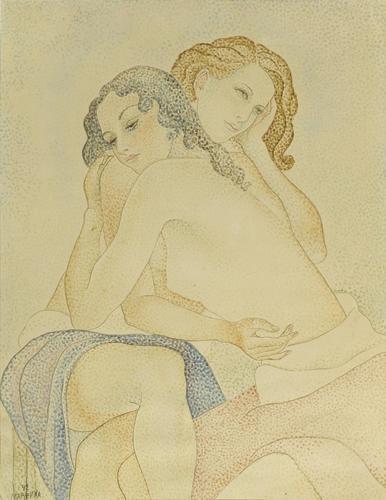
Portrait of the Artist’s Daughter, Marika (Rivera), aged 23, with a Lover, Marevna Marie Vorobieff
149 notes
·
View notes
Photo
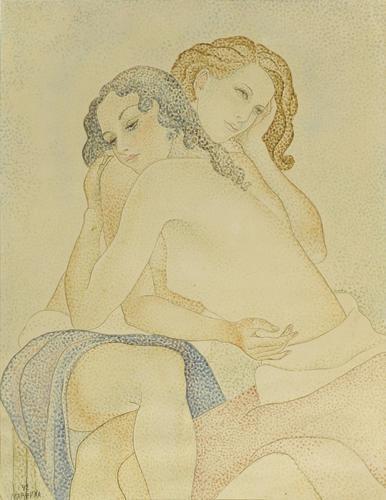
Portrait of the Artist’s Daughter, Marika (Rivera), aged 23, with a Lover, Marevna Marie Vorobieff
74 notes
·
View notes
Photo
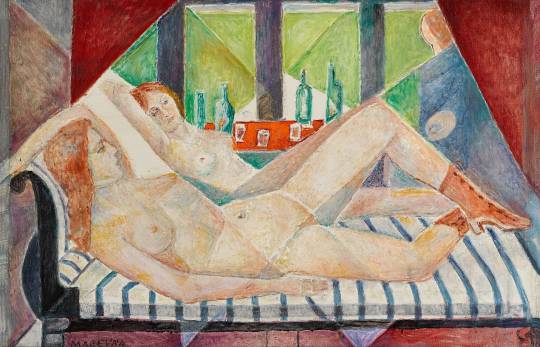
“Reclining Nude”, 1972, by Marevna (Marie Bronislava Vorobieff-Stebelska) (Russian painter, 1892-1984).
~ Marevna was born Marie Vorobieff-Stebelska in 1892 in Cheboksary, Russia. Her mother was an actress and her father a Polish nobleman. She spent a lonely childhood in Tiflis, the capital of Georgia, which was under Russian control.The name Marevna was given to her after a Russian fairy sea princess by Maxim Gorki, a Russian author and political activist whom she met in Italy, and this then became her signature.An audacious yet charming and high spirited character, Marevna travelled Europe extensively and was one of the first women to discover Cubism, achieving remarkable blends of pointillism and structure in her work. Marevna was initially a portraitist but embraced cubism, partially due to the influences of her relationship with the world famous Mexican painter/muralist Diego Rivera. Marevna entered the Moscow Stroganov Art Academy in 1910 and the following year went to Italy. In 1912 she went on to enter Paris and make a dramatic entry into the artistic community of La Ruche and live through the anti-cubist feelings of the First World War. Marevnas first significant exhibition was in 1912 at The Tuileries in France. Marevna went on to write her book Life with the Painters of La Ruche about her life during this period with the likes of Picasso, Braque, Matisse, Soutine and Rivera to mention but a few. Marevna met Diego Rivera in 1915 when he temporarily became part of La Ruche. Although Rivera was still in a common-law marriage with Russian artist Angelina Beloff, he and Marevna had a daughter called Marika (1919 - 2010) and they continued to experienced a stormy and complicated relationship until he returned home in 1921. Marevna spent her mature years residing with her daughter Marika in England and lived at Athelhampton House from 1948 to 1956. Marevna continued to paint throughout this period and her work during this time include a portrait of son-in-law Rodney Phillips and the world famous pyramid topiaries of Athelhampton’s Great Court. Some of her work is now displayed in Athelhamptons West Wing Gallery. ~
5 notes
·
View notes
Photo
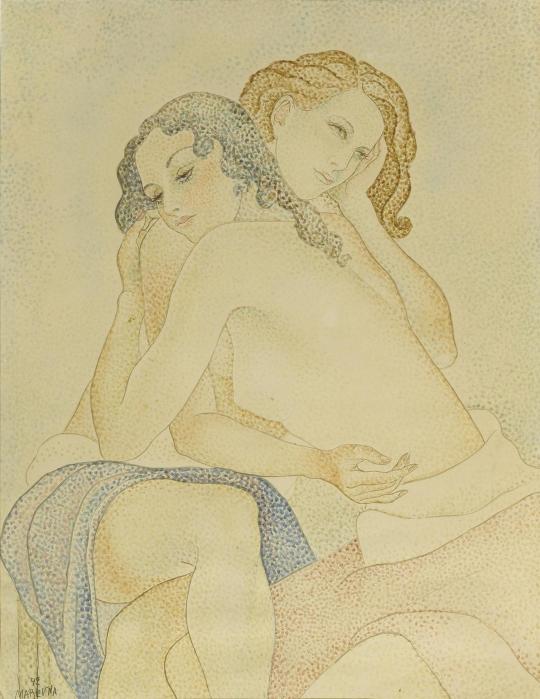
Portrait of the Artist’s Daughter, Marika (Rivera), aged 23, with a Lover, Marevna Marie Vorobieff
19 notes
·
View notes
Photo
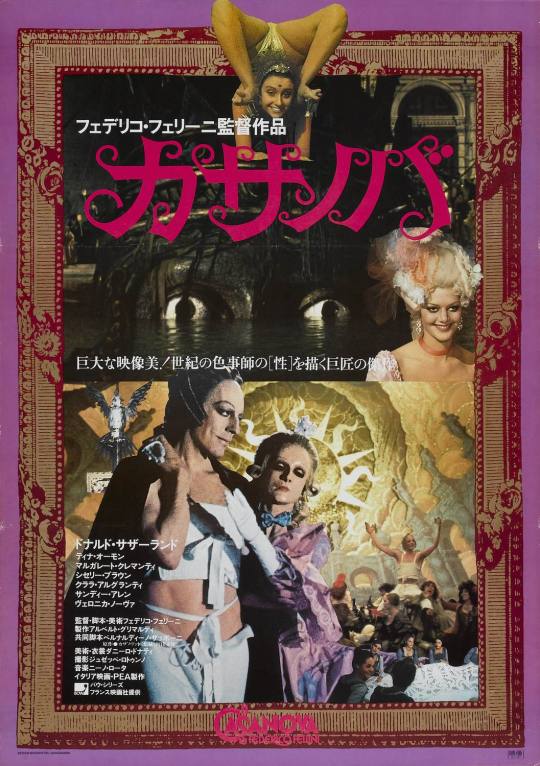
Fellini’s Casanova screencaps!!
In these dull days of confinement, I hope I will deilght your mood a little with the colourful screencaps of Fellini’s Casanova :D
Fellini’s Casanova (Il Casanova di Federico Fellini) is a 1976 Italian film by director Federico Fellini, adapted from the autobiography of Giacomo Casanova, the 18th-century adventurer and writer.
Shot entirely at the Cinecittà studios in Rome, the film won an Academy Award for Best Costume Design, with the Oscar going to Danilo Donati.
The film portrays Casanova’s life as a journey into trivial sexual abandonment. Any meaningful emotion or sensuality is eclipsed by increasingly strange situations. The narrative presents Casanova’s adventures in a detached, methodical fashion, as the respect for which he yearns is constantly undermined by his more basic urges.
Plot (it may contain spoilers)
The film opens with a carnival in Venice as a prelude to a series of erotic encounters that follow Giacomo Casanova through the cities of 18th-century Europe. The organizers of the festival attempt to raise a gigantic bust from the water; this fails, which is taken as a bad omen. Casanova is then introduced, as he visits one of Venice’s islands to copulate with a fake nun for the pleasure of a rich voyeur; Casanova succeeds in entertaining him, but is frustrated that the man finds no interest in his research into alchemy and his further scheming. As he rows back to the mainland, Casanova is arrested, judged and imprisoned by the High Court over his famed debauchery.
During his time in prison, Casanova reminisces of his affairs with a dressmaker and later on with one of her junior employees, Anna Maria, who suffers from frequent fainting and requires constant bloodletting. He eventually consummates his desire for Anna Maria. Back in prison, Casanova escapes through the roof and exiles himself from Venice, being taken into the Paris court of Madame d'Urfé. The Madame, an aged woman, enthralled by Casanova’s apparent knowledge of alchemy, wishes to transform her soul into a man’s through ritualistic intercourse with him (an act that requires the presence of a younger woman in the room, so that Casanova can get aroused). Fortuitously, Casanova encounters his brother, whose girlfriend he entices away. Casanova then moves to the court of a hunchback, Du Bois, in between taking charge of a beautiful girl—"the love of [his] life"—Henriette. Du Bois puts on a homosexual theatrical performance for his guests that unsettles some of them; Casanova is brought to tears as Henriette plays some music. The lovers vow fidelity to each other, but the following morning Henriette has disappeared. Du Bois informs Casanova that an emissary of a far-away court has reclaimed Henriette, and she’s left a request that Casanova not attempt to follow her.
While in London, Casanova is robbed by two women and he attempts suicide by drowning himself in the Thames. A vision of a giantess and two dwarves distracts him; he follows them to a frost fair, where he arm-wrestles the giantess—a princess—and later pays to watch her bathe with the dwarves. Casanova resumes his travelling the following day. He attends a deranged party at Lord Talou’s palace in Rome, where he wins a bet with a stagecoach driver, Righetto, over how many orgasms he can have in one hour. The competition brings him higher acclaim. In Switzerland he falls in love with an alchemist’s daughter, Isabella, who fails to keep an appointment to go to Dresden with him; Casanova instead partakes in an orgy within the hostel he’s been stranded in. In Dresden, he has a brief chance encounter with his estranged mother in a theater. He then moves to a court in Württemberg, where his desire to be taken seriously as a writer/inventor is frustrated by the court’s orgiastic, wild nature. It is here that he meets Rosalba, a mechanical doll with whom he shares a dance and later on goes to bed with.
Time goes by and an old Casanova finds himself librarian to Count Waldstein at his castle in Dux. Life at the castle is more than frustrating for Casanova, as he is made to eat with other servants and does not get the respect nor the food he claims to deserve. Waldstein’s manservant, Faulkircher, and his lover Vidarol, make him an object of mockery and animosity. A portrait of him is hanged and defecated on. Later on, during a fervent poetry recital, a court member fails to suppress a giggle at Casanova, who, humiliated and disappointed, goes back up to his room. The final scene has a weary, bloodshot Casanova cringing in an armchair and recounting a recent dream. In this dream, Casanova is back in Venice. He catches a glimpse of the giant bust seen in the beginning of the film, buried under thick layers of ice in the lagoon. He chases the ghosts of his past lovers, all of whom disappear. An ornate stagecoach beckons him to join its passengers. He finally meets with Rosalba, the mechanical doll, once again. They quietly dance with each other.
Cast
Donald Sutherland as Giacomo Casanova
Tina Aumont as Henriette
Cicely Browne as Marquise d'Urfé
Carmen Scarpitta as Madame Charpillon
Clara Algranti as Marcolina
Daniela Gatti as Giselda
Margareth Clementi as Sister Maddalena
Mario Cencelli as Dr. Mobius
Olimpia Carlisi as Isabella’s sister
Silvana Fusacchia as Isabella
Chesty Morgan as Barberina
Leda Lojodice as Rosalba the Mechanical doll
Sandra Elaine Allen as Angelina the Giantess
Marika Rivera as Astrodi
Diane Kurys as Madame Charpillon’s daughter
Alessandra Belloni as Princess
Donald Hodson as Hungarian captain
#Tina Aumont#Donald Sutherland#Federico Fellini#Fellini's Casanova#1976 Fellini's Casanova#my screencaps
36 notes
·
View notes
Photo
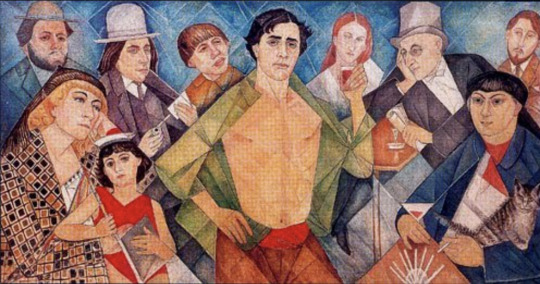
Marevna (Marie Vorobieff-Stebelska) Homage to Friends from Montparnasse 1962
This painting by Marevna pictures the gang she hung around with when they were all poor young artists in the Montparnasse neighborhood of Paris in the 1920s. Pictured are (from top left to right): Diego Rivera (Marevna’s lover at that time), Ilya Ehrenburg, Chaim Soutine, Amedeo Modigliani, Jeanne Hébuterne, Max Jacob, Leopold Zborowski and (bottom left to right): Marevna, with her and Rivera’s daughter Marika and Moïse Kisling.
22 notes
·
View notes
Text
Diego Rivera
Diego Rivera (1886–1957) was the husband of Mexican Surrealist painter Frida Kahlo, who he met through their membership in the Mexican Communist Party. He'd previously been married to Russian painter Angelina Beloff and novelist Guadalupe Marín. He's depicted in Kahlo's 1931 painting Frieda and Diego Rivera, based on a photograph from their wedding. He was part of a circle of influential artists that included painters like Jeanne Hébuterne and her common-law husband Amedeo Modigliani. His primary medium was political murals inspired by a combination of traditional Mexican and modern painting styles. In his 1928 mural En el Arsenal, Kahlo can be seen handing out munitions. Rivera was the father of four children including architect Ruth Rivera Marín and actress Marika Rivera.
See another one →
1 note
·
View note
Photo

Marevna (Maria Vorobyeva-Stebelskaya, Marie Vorobieff) (Russian, active in France and Britain, 1892-1984)
Homage to Friends from Montparnasse, 1961
(Left to right: Diego Rivera, Marevna with hers and Diego Rivera's daughter Marika, Ilya Ehrenburg, Chaim Soutine, Amedeo Modigliani, his wife Jeanne Hébuterne, Max Jacob, Moise Kisling with a cat, Leopold Zborowski.)
2 notes
·
View notes
Photo
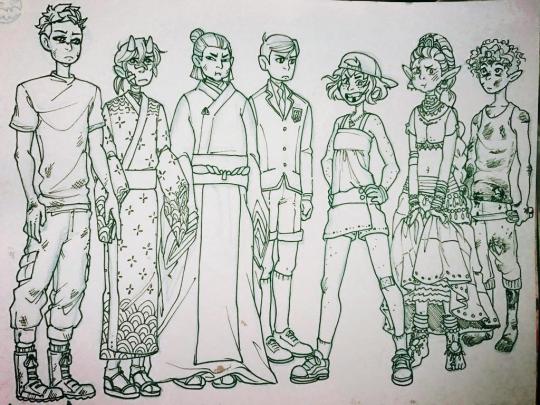
the cast as kids, featuring matías and his iconic “what’s up with your hands, mister?” look.
#ROUT#voltaic comic#yadriel#yadriel rivera velez#motochika#motochika saitou#junjie#liu junjie#blane#blane mccormick#marika#marika garcia#cerenaya#cerenaya audet di laponte#matías#matías del bosque#art by op#artists on tumblr
1 note
·
View note
